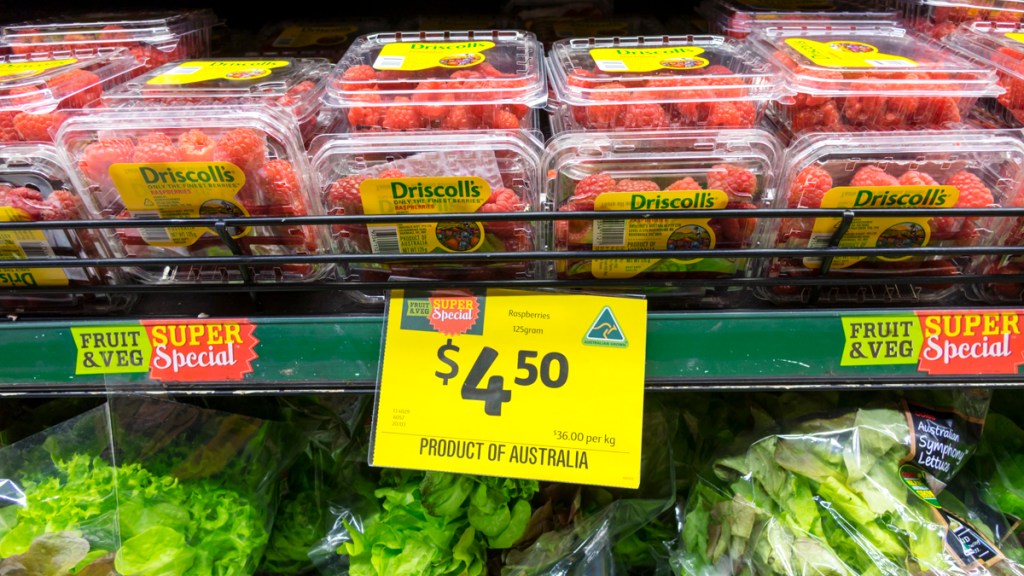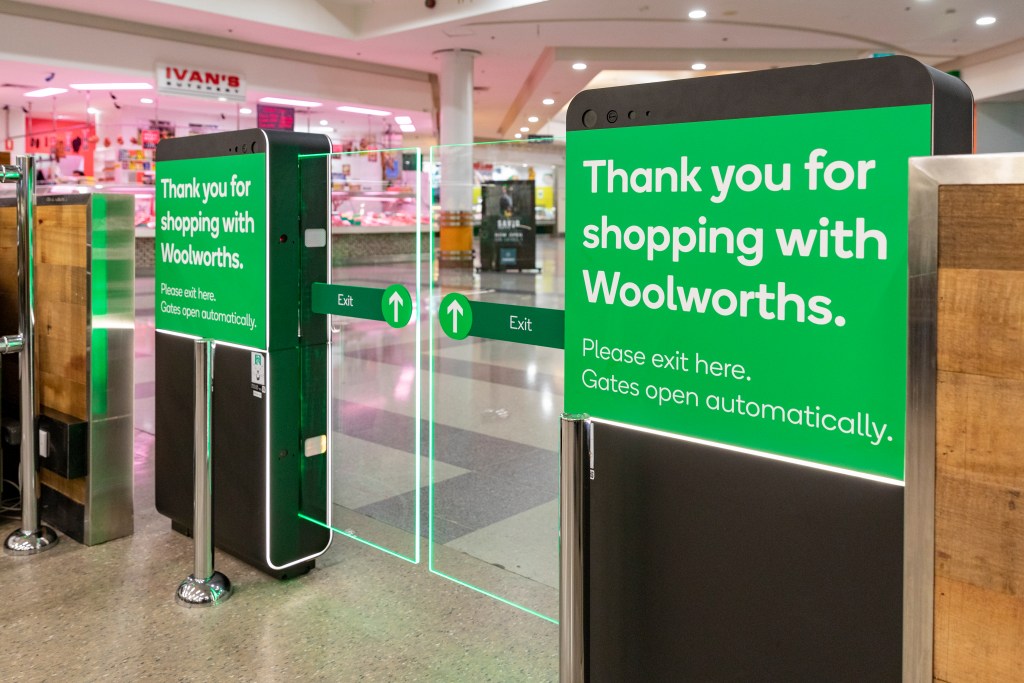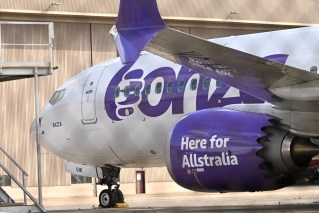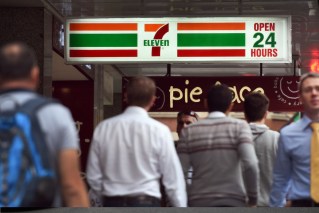Coles and Woolworths first-quarter results reveals significant drop in fresh produce prices

The price of fresh produce – including meat, vegetables, fruit, deli items and bakery products – has dropped 12 per cent at Woolworths and 14 per cent at Coles compared to a year ago, but the supermarket duopoly still saw revenue increase in their first-quarter results.
Coles posted $10.25 billion in first-quarter sales, a 3.6 per cent rise compared to the first quarter of the 2022 financial year, while Woolworths’ revenue grew by 5.3 per cent for a total of $17.2 billion.
“Importantly for our customers, inflation in our food businesses continued to moderate over the quarter driven mainly by deflation in fruit and vegetables and meat as lower input costs in these categories have led to lower retail prices,” Woolworths CEO Brad Banducci said.
“The trading environment remains uncertain and value for money remains a key focus for our customers across all our businesses.”
Inflation excluding tobacco and fresh food was at 5.7 per cent for Coles compared to the previous year and 4 per cent for Woolworths, driven by high milk, cheese, egg and oil prices.

Fresh produce has dropped in price compared to a year ago. Photo: Getty
Both companies reported strong increases in home-brand product sales, and Coles said its customer insights have revealed shoppers are “increasingly eating and entertaining at home, seeking out loyalty points and bonus offers, and looking for more affordable alternatives as they seek more value in response to cost-of-living pressures.”
E-commerce
Both Coles and Woolworths saw positive results on their e-commerce platforms and online sales, experiencing a 24 per cent and 16 per cent increase respectively.
Gary Mortimer, Professor of Marketing and Consumer Behaviour at Queensland University of Technology, said the increase shows that customers have a level of trust when it comes to online shopping.
“One of the challenges when it comes to food and grocery shopping online is this concept around quality and freshness,” he said.
“It sounds like both Coles and Woolworths have got that right.”
Coles’ e-commerce sales increased from $684 million last financial year to $852 million, while Woolworths lifted from $1.38 billion to $1.55 billion, buoyed by the acquisition of failed home delivery start-up MILKRUN in February.
Mortimer said before COVID-19, both supermarkets had an online penetration rate, or the number of households using the service, of 1.5 to 2 per cent of their total customers, which has increased to 12 per cent for Woolworths and 9.1 per cent for Coles.
“One of the underlying challenges of food and grocery shopping online is this sense of urgency,” he said.
“When you’re buying groceries, you want it delivered tonight to cook tonight and Milkrun has helped them capture that immediacy.”
The strong growth by Coles was underpinned by liquor sales increasing by 32.2 per cent and “improved availability, digital shopping experience, seasonal events, personalisation, integration with Flybuys, and platform speed and stability.”
Loyalty rewards and apps
Coles experienced a 39.4 per cent increase in traffic on its mobile app during the quarter, which it attributed to a variety of new features.
Leah Weckert, Coles Group CEO, said the company was focused on providing its customers with more value at the checkout through “everyday prices, weekly specials and personalised Flybuys offers”.
“We added several features to make it easier and faster for customers to find value through our digital platform,” she said.
“Pleasingly for customers, availability continues to improve and inflation in key categories is moderating.”
Its Flybuys members program saw a 9.9 per cent increase in members and a 22 per cent increase in customers using its tailored members-only offers.
Woolworths launched lower prices on certain products for members in August, resulting in a 6.8 per cent increase, or 600,000 new members, compared to the previous financial year.
Mortimer said the tactic is also used by Dan Murphy’s and Supercheap Auto.
“Shoppers who choose to sign up for loyalty programs can see the value that they’re getting for that loyalty,” he said.
“It’s displayed in store — this is the regular price and this is the member’s price – and it encourages sign-ups.”
The supermarket experienced a 22.8 per cent increase in digital traffic, with the weekly active users of Everyday Rewards and the Woolworths app lifting 44 per cent and 37 per cent respectively.
Technology
Coles and Woolworths ramped up technological solutions to curb shoplifting recently, and Coles said Skip Scan and Smart Gates, or product tracking cameras and automated gates that lock during shoplifting, will be implemented in more than 250 stores by the end of the calendar year.

Coles and Woolworths have been introducing technological solutions to shoplifting. Photo: Dallas Kilponen/Woolworths
Woolworths has started trialling smart gate technology in their stores, however, there is currently no confirmation if it will rolled out nationwide.








